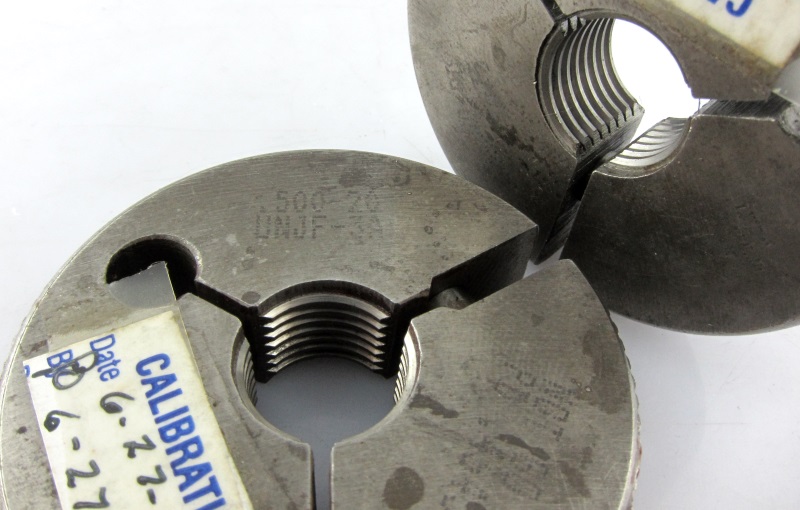UNJ Screw Threads2019-06-28
Unified National is a standard commonly used by the United States and Canada in for Inch Screw Threads where the flanks of the V have an angle of 60° to each other. At first, UN(*Ref) only included four basic categories: UNC, UNF, UNEF, UNS, and then UNJ and UNR were gradually added to the standard. Originally developed to meet aerospace requirements for a screw thread, to provide maximum fatigue strength for fastening safety critical components subjected to high stress loads, is the UNJ threading profile. Nowadays, it is also widely used in high-end automotive and robotic automation.
UN Thread Classes
According to UN standard, there are three different classes (1A, 2A, and 3A) when it comes to external threads, and for internal threads there are three as well (1B, 2B, and 3B).
1A and 1B: Refers to the thread fitting with the most loose tolerance, where there is a huge allowance. This class of thread fit is applicable to easy assembly and disassembly.
2A and 2B: The major class in the industrial and commercial applications, such as machine screws and fasteners. This class of thread fit is interchangeable and stable in regard to quality and assembly.
3A and 3B: Applied to commercial products with high quality, this class of thread fit requires compact assembly with an extremely small allowance. Therefore, 3A/3B thread fitting is usually seen in crucial design with safety requirement in commercial or aerospace industry products.

The UNJF-3A adjustable thread gauge is with an extremely small allowance.
As for external threads, the tolerance of 1A class thread fitting is larger than it of 2A class fitting by 50%, and by 75% than it of 3A class fitting. Samely, for internal threads, the tolerance of 1B class fitting is larger than it of 2B class fitting by 50%, and by 75% than it of 3B class fitting. Taking the 5/16”-18 UNJ-3B thread as an example to show how to read UN thread specification, the 5/16” stands for the major diameter, the 18 UNJ suggests that there are 18 threads per inch in the UNJ threads, and the 3B refers to the finest class of the UNJ internal threads.
Trivia about lathe UNJ threading
In the following, APPORO is going to introduce UNJ threads. Initially released December 1965, the military specification MIL-S-8879 is mainly applied to aerospace fasteners. There are internal thread and external thread specifications when it comes to UNJ threads, which based on the pitch can be categorized into UNJC, UNJF, UNJEF, and UNJS. UNJ threads are different from UN threads in the respects below:
1.) external threads: The roots of regular UN threads will be V shape bottoming, while the roots of UNJ thread are strictly specified to be semicircular bottoming. This kind of circular roots can slow down the wear rate of sharp cuts during processing and increase the fatigue strength of threads.
2.) internal threads: In order to assemble with the semicircular bottoming of external thread, the minor diameter of an UNJ internal thread will be slightly larger than it of a regular UN internal thread. As internal threads are rather unlikely to break from the internal stress, there is no specifications for the major diameter roots of UNJ internal threads to be semicircular bottoming.
3.) The symbol for all UN external threads is “A”, while for all UN internal threads is “B”. In addition, for J series threads usually the required thread class is 3A/3B, which is the highest fit, and the second most common thread class for J series threads is 2A/2B. On the other hand, for UN threads the thread class is commonly 2A/2B.
In the process of lathing UNJ external threads, sharp cuts should be equipped according to the specified root radius (between 0.15011 pitch and 0.18042 pitch), so that the roots of the external threads could be smooth semicircles in a row in shape. As the roots of an external UNJ thread are special semicircles in shape, its minor diameter is slightly larger than it of a regular external UN thread, and that is why it could not match other Inch Screw Threads of the same specifications. For example, if we drive an ⅜”-16 UNC nut with an ⅜”-16 UNJ screw, the minor diameters of these two would interfere with each other, resulting in the assembly failure. However, using a larger tapper to manufacture the internal thread of the ⅜”-16 UNC nut could prevent the minor diameters from interfering and avoid other assembly problems.
On the contrary, if we would like to drive an internal UNJ thread with a regular external UN thread, since there is no specifications about the major roots of an internal UNJ thread being semicircles in shape, basically an internal UNJ thread could match an external UN thread of same specifications. The difference between an internal UNJ thread and an external UN thread is that the minor diameter of an internal UNJ thread, as known as the size of its tap-drill hole, is larger; therefore, the minor diameter of the internal UNJ threads could match the semicircular shape external roots of the external UNJ threads. For instance, under some special circumstances, there will not be any problems driving an ⅜”-16 UNJ nut with an ⅜”-16 UNC screw.
In comparison with hundreds of thousands of thread specifications and applications, thread manufacturing and inspection are rather simple. However, their importance is often underestimated, leading to assembly failure and possibly affecting the overall product equality. Find yourselves a CNC expert with thread manufacturing proficiency and experience like APPORO so that the quality of your products are guaranteed!
*Ref: Learn more about Unified Thread Standard
